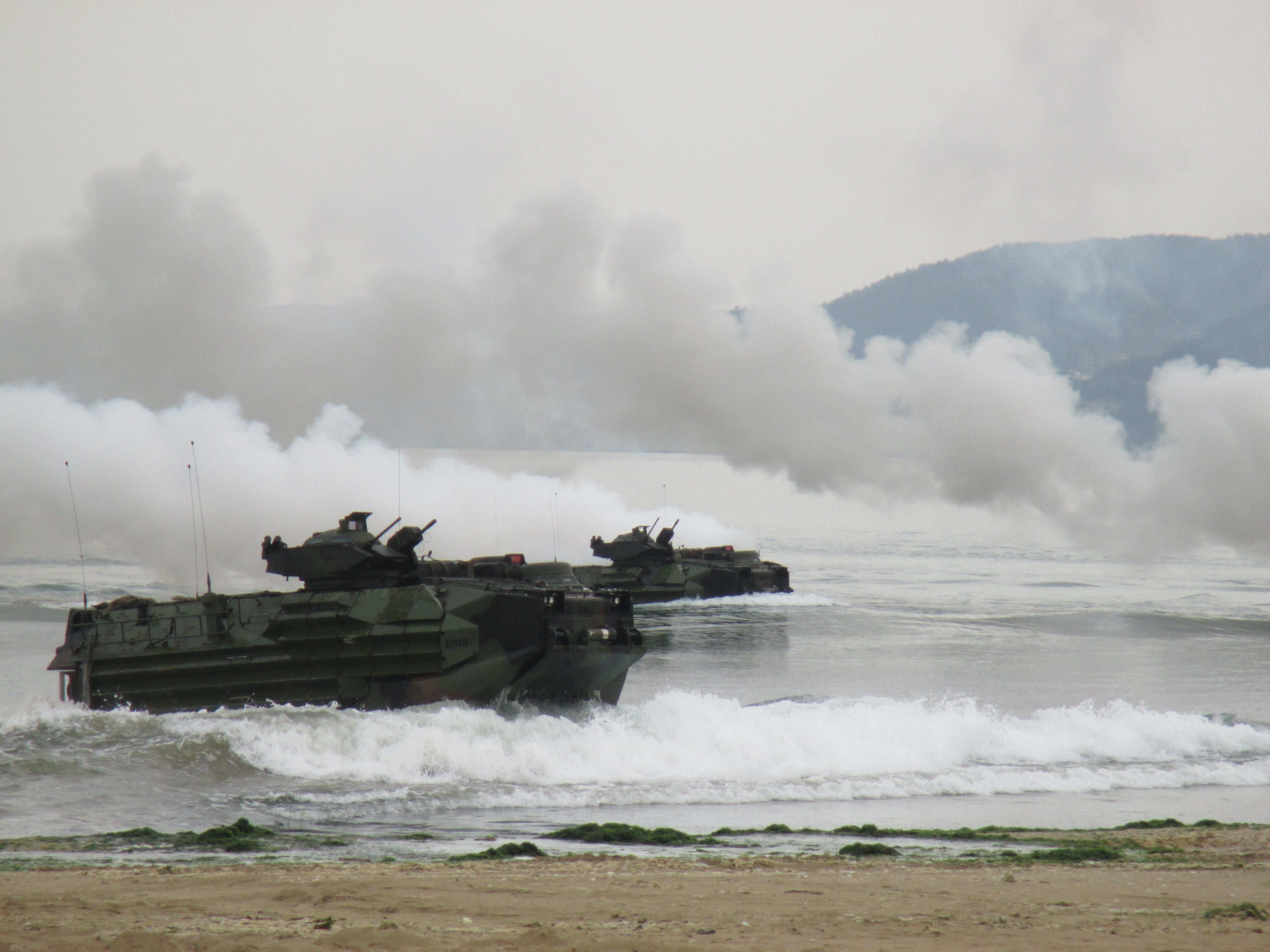Modern weapons can destroy ships and landing craft many miles from shore, forcing the Marine Corps to turn to new technologies to ensure Marines can land in force on enemy coasts.
That's why a new task force is looking at everything from drone boats to electronic deception to get Marine raiders and landing teams safely ashore.
The task force's goal is to find existing systems to exploit gaps in enemy defenses, allowing Marine amphibious vehicles to get from ship to shore, said Maj. Jim Foley, of the Marine Corps' Ellis Group, an internal think tank that explores future warfighting scenarios.
"We're going to have potentially different vehicles, but we're going to enable them to get to the shore because we're going to have more effective en route fire support," Foley told Marine Corps Times. "We're going to allow commanders to make better decisions because we're looking at technologies that will support their command and control ability during those operations — and information warfare capabilities that will support that."
Industry, academia and government think tanks will show what technologies they have that meet the Marine Corps' needs next April at Camp Pendleton, California, Foley said. The task force then hopes to allow Marines to drive those technologies in an amphibious exercise that fall.
"Today, the first wave is our [Amphibious Assault Vehicles] going in," said Lt. Gen. Robert Walsh, who co-leads the task force with the Navy. "Now, what we're potentially talking about is that first wave being other things out there first."
The Navy is developing an unmanned boat to detect mines that could be modified to detect radio frequencies ahead of amphibious landings, said Walsh, commander of Marine Corps Combat Development Command.
"It could potentially bring a robot that goes ashore ... that would have sensors and shooters going ashore in advance," he told reporters Wednesday.
The task force is also interested in technologies that could sow confusion about where an amphibious landing is taking place, he said.
"You have a boat or something that's out there that's dropping deception jammers with the enemy thinking, 'That's where the assault is coming in from,'" Walsh said. "It's not. It's coming in from somewhere else."
All of these systems will make it possible for Marines to land in their amphibious vehicles, Walsh said.

Marines aboard amphibious assault vehicles rehearse a combined forcible entry landing operation on Dogue beach in Pohang, Republic of Korea, as part of exercise Ssang Yong 2014.
Photo Credit: Capt. Caleb Eames/Marine Corps
"Our Marines going ashore in those fighting vehicles that will then come from ship to shore, come out of the water and fight on land — they are still a main piece of this," he said.
But the Marine Corps' current and future amphibious vehicles can only motor at six knots through water and critics have argued that the vehicles may have to travel up to 100 miles to reach the shore — a 16-hour journey under which these vehicles may be under fire.
Rebel groups like the Houthis recently fired cruise missiles at Navy warships off Yemen's coast. These missiles have a range of roughly 60 miles.
Walsh countered that the Marines would most likely launch 100 miles from shore only as part of a covert raid.
"It's going to be a quick raid in — do it — and maybe get out of there," he said. "But if we're going to bring a large force in, we're not going to be doing it from 100 miles. We're going to be able to set those conditions and get in closer."





